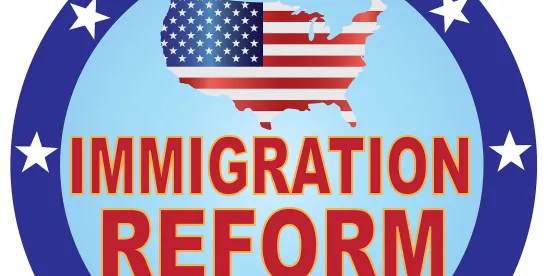On July 4, 2025, President Trump signed into law H.R.1, known as the “One Big Beautiful Bill Act” (Public Law 119-21), introducing new U.S. immigration fees that will affect employers and foreign nationals. One of the new provisions is the “visa integrity fee,” a $250 charge that will be added to every nonimmigrant visa issuance. While this fee became law over two weeks ago, implementation details remain unclear, creating uncertainty for businesses and visa applicants planning for the months ahead.
Understanding the Visa Integrity Fee
The visa integrity fee represents a fundamental shift in U.S. immigration fee structure. Unlike traditional processing fees, this charge is designed as both a revenue generator and compliance mechanism, applying to all nonimmigrant visa categories at the point of visa issuance by the Department of State (DOS).
Key features include:
- Universal Application: The fee applies to every nonimmigrant visa category – H-1B, L-1, O-1, F-1, J-1, B-1/B-2, and all others.
- Per-Person Charge: The fee applies to each individual visa issued, including dependents (H-4, L-2, F-2, J-2, etc.).
- One-Time Payment Per Visa: The fee is charged once “at the time of visa issuance” by the DOS, not as an additional U.S. Citizenship & Immigration Services (USCIS) charge.
- Tied to Actual Visa Issuance: The fee only applies when a physical visa stamp is issued by a U.S. consulate abroad, not for USCIS change of status applications within the United States.
- No Fee for Denied Applications: Since the fee is charged “at the time of issuance,” applicants whose visa requests are denied will not be charged the fee.
- Minimum $250: The Department of Homeland Security (DHS) can set the fee higher through regulation.
- Annual Inflation Adjustments: Beginning in fiscal year 2026, the fee will increase annually based on the Consumer Price Index.
- Additional Cost: The fee is imposed “in addition to” existing visa application fees, reciprocity fees, and other charges.
Payment Timing and Denial Protection
Unlike most other visa fees that are paid upfront during the application process, the visa integrity fee is uniquely structured to be collected only upon successful visa issuance. This creates an important protection for applicants.
Traditional Fees vs. Visa Integrity Fee
- Machine Readable Visa (MRV) Application Fee: Paid before the interview; not refunded if visa is denied.
- Visa Integrity Fee: Paid only when visa is issued; no charge if application is denied.
This structure suggests that consular officers would first approve the visa application, then collect the visa integrity fee as part of the actual visa issuance process. Denied applicants would not reach the “issuance” stage where the fee is collected.
Change of Status vs. New Visa Issuance
Understanding when the visa integrity fee applies requires distinguishing between change of status and new visa issuance:
No Fee for Change of Status Within the United States
- When an individual changes classifications while remaining in the United States (e.g., F-1 to H-1B), USCIS processes this as a “change of status.”
- No new visa is issued during this process; the person receives an I-797, Approval Notice.
- Since no visa is “issued,” the visa integrity fee should not apply.
Fee Required for New Visa Issuance
- The person who changed their status travels abroad and applies for a visa stamp in their new classification at a U.S. consulate.
- The DOS issues an actual visa stamp.
- The visa integrity fee applies because a new visa is being “”
Practical Examples
- No Additional Fee: F-1 student changes to H-1B status while in the United States and remains in the country.
- Fee Required: Same individual later travels abroad and must obtain an H-1B visa stamp to re-enter.
- Extension Scenarios: H-1B extensions processed by USCIS within the United States do not trigger the fee, but obtaining a new H-1B visa stamp abroad would.
Implementation Uncertainty May Create Planning Challenges
Despite being enacted into law, the visa integrity fee is not yet operational. USCIS issued a brief statement July 11, 2025, indicating they “will soon begin to collect new fees for certain immigration benefit requests” with details to follow “in the coming days.” A July 22 Federal Register notice confirmed that the visa integrity fee “requires cross-agency coordination before implementing” and will be addressed “in a future publication.”
This implementation gap creates several practical challenges:
- Budget Planning: Employers cannot definitively calculate visa costs for pending applications.
- Timeline Uncertainty: No clear implementation date has been announced.
- Collection Mechanism: While DHS sets the fee amount, it remains unclear whether DOS or DHS will collect the fee, though the statutory language suggests collection at the point of visa issuance.
- Retroactive Application: It remains unclear whether the fee will apply to visas issued after July 4, 2025, or only after formal implementation.
The Refund Provision
An unusual aspect of the visa integrity fee is its potential refundability, a concept virtually unprecedented in U.S. immigration fee structures. The statute provides that visa holders who fully comply with their visa terms may receive reimbursement of the $250 fee.
To qualify for a refund, visa holders must:
- avoid all unauthorized employment;
- either depart the United States promptly at the end of their authorized stay; or
- obtain a lawful extension or adjustment of status.
However, this potential benefit comes with caveats. The Congressional Budget Office projects that only “a small number of people would seek reimbursement” and expects that “the DOS would need several years to implement a process for providing reimbursements.” Given the historical difficulty of obtaining refunds from government agencies, employers and foreign nationals should treat this fee as non-refundable for planning purposes.
Cost Impact on Business Immigration
The visa integrity fee will significantly increase the cost of employing foreign nationals, particularly when accounting for family members. Consider these examples:
- H-1B Worker with Family: An H-1B visa holder with H-4 spouse and child will face $750 in visa integrity fees ($250 × 3 people) plus existing application fees.
- L-1 Executive Transfer: An L-1A executive with L-2 spouse and two children will incur $1,000 in visa integrity fees ($250 × 4 people).
- International Students: F-1 students already paying $535 ($185 application fee + $350 SEVP fee) will face $785 total cost, with F-2 spouses adding another $250.
- Tourist Families: A family of four applying for B-1/B-2 visas will pay $1,000 in visa integrity fees alone.
Importantly, this fee is separate from and in addition to USCIS petition filing fees (such as I-129 or I-140 fees), meaning employers will face the visa integrity fee as a distinct cost at the consular processing stage. However, the fee structure provides some protection since denied applicants will not be charged the visa integrity fee, unlike traditional application fees.
For multinational corporations regularly transferring employees or universities hosting international students, these increases represent substantial budget impacts. The Congressional Budget Office estimates the provision will generate $28.9 billion in additional revenue over the 2025-2034 period.
Strategic Considerations for Employers
Employers should consider several immediate steps to address this development:
- Budget Adjustments: Update immigration budgets to reflect the additional $250 per visa issuance for each family member, recognizing that a single employee transfer could result in $500-$1,000+ in additional fees depending on family size, separate from existing USCIS petition costs.
- Travel and Timing Strategies: Consider the implications of the change of status versus visa issuance distinction when advising employees about travel timing and status change strategies.
- Risk Assessment: Factor in the protection that denied applicants will not pay the visa integrity fee when evaluating application strategies and budgeting.
- Policy Reviews: Consider whether higher visa costs warrant changes to international assignment policies, family accompaniment benefits, or hiring strategies.
- Communication Plans: Prepare to explain substantial cost increases to foreign national employees and their families, particularly the difference between change of status (no additional fee) and new visa issuance (fee required).
- Implementation Monitoring: Establish processes to track when agencies announce implementation procedures, as the fee could become effective with minimal notice.
- Documentation Systems: Begin developing procedures to track visa compliance for potential refund eligibility, even though reimbursement remains uncertain.
Changes to the Broader Fee Landscape
The visa integrity fee is part of a comprehensive fee restructuring under Public Law 119-21. Other changes include:
- Form I-94 Fee: Increased from $6 to $24 for arrival/departure records
- ESTA Fee: Increased from $4 to $13 for Electronic System for Travel Authorization applications under the Visa Waiver Program (note that ESTA applicants are exempt from the $250 visa integrity fee since no visa is issued)
- EVUS Fee: New $30 fee for Chinese B-1/B-2 visa holders using the Electronic Visa Update System
- Asylum Applications: New $100 application fee (previously free)
- TPS Applications: New $500 application fee
- Various EAD Fees: Multiple new employment authorization document charges
These cumulative changes represent the most significant immigration fee increases in recent memory, reflecting the administration’s focus on generating revenue for enhanced enforcement activities. Notably, while ESTA travelers’ authorization fee more than tripled (from $4 to $13), they remain exempt from the much larger $250 visa integrity fee, preserving some cost advantage for Visa Waiver Program countries compared to traditional visa applicants.
Looking Ahead: Implementation and Compliance
As agencies work to implement these new fees, employers should prepare for operational changes that may include:
- New Payment Systems: Agencies must update technological infrastructure to collect the fees.
- Revised Forms and Instructions: Application procedures will require updating.
- Interagency Coordination: The visa integrity fee requires collaboration between DHS (which sets the fee) and DOS (which issues visas and likely collects the fee).
The delay with implementation details suggests the complexity of operationalizing these fee changes. However, given the statutory mandate, employers should expect these fees to take effect sooner rather than later.
Additional Considerations
In this period of implementation uncertainty, employers should consider taking the following steps:
- Monitor Official Announcements: Regularly check USCIS, DOS, and Federal Register publications for implementation notices.
- Engage Immigration Counsel: Consult with your immigration attorneys to develop response strategies that account for the change of status versus visa issuance distinction.
- Update Financial Planning: Incorporate higher visa costs into budget projections and employee relocation packages, accounting for all family members and the separate nature of this fee from USCIS petition costs.
- Review Existing Cases: Assess pending visa applications and upcoming travel plans to understand potential fee implications for employees and dependents.
- Develop Strategic Guidance: Create protocols for advising employees about travel timing relative to status changes to minimize unnecessary fee exposure.
- Prepare Communication Materials: Develop explanations for employees about cost increases, including the protection that denied applicants will not pay the fee.
Conclusion
The visa integrity fee represents a significant shift in U.S. immigration policy, introducing cost increases while creating an unprecedented refund mechanism tied to compliance. The per-person application of the fee means that families will face particularly substantial financial burdens, with costs potentially reaching $1,000 or more for larger families. The distinction between change of status and new visa issuance creates strategic planning opportunities for employers and foreign nationals to minimize fee exposure through careful timing of travel and status changes. Additionally, the protection that denied applicants will not be charged the fee provides some risk mitigation compared to traditional visa application fees.
As we await formal implementation procedures, employers should consider taking proactive steps now to understand and prepare for these changes and minimize disruption when the new fee structure becomes operational.



 />i
/>i
